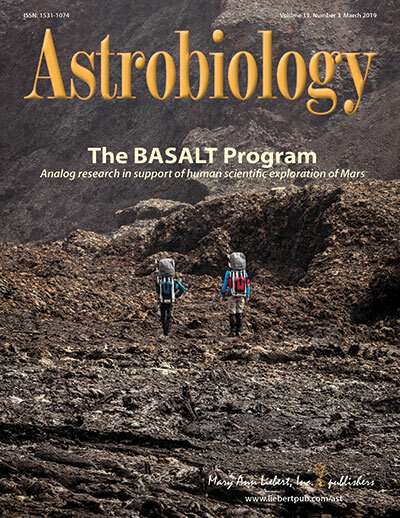Simulated extravehicular activity science operations for Mars exploration

A new study describes the Science Operations component and new results from NASA's Biologic Analog Science Associated with Lava Terrains (BASALT). The goal of BASALT was to provide evidence-based recommendations for future planetary extravehicular activity (EVA), simulating in particular the conditions associated with conducting human scientific exploration on Mars. The article appears in a Special Issue on BASALT led by Guest Editor Darlene Lim, Ph.D., NASA Ames Research Center and published in Astrobiology.
The article entitled "Using Science-Driven Analog Research to Investigate Extravehicular Activity Science Operations Concepts and Capabilities for Human Planetary Exploration") was lead-authored by K.H. Beaton, KBRwyle (Houston, TX) and NASA Johnson Space Center (Houston) and a team of researchers from these institutions, Jacobs Technology (Houston), Idaho State University (Pocatello), McMaster University (Hamilton, Canada), University of Edinburgh (Scotland), BAER Institute (Moffett Field, CA), and NASA Ames Research Center (Moffett Field).
In the article, the researchers focus on the study design and results of the second field deployment of BASALT. They describe the overall scientific objectives and rules of the EVA, critical capabilities needed for science-driven EVAs and specific activities such as sampling and communication, EVA distance and duration of deployment, individual roles and responsibilities of the extravehicular and intravehicular crews, needs for data and image capture. They also present recommendations for future directions and subsequent research objectives.
"As we move human exploration back to the Moon, into deep space and onwards to Mars, it will be important for the science and exploration communities to identify EVA design requirements that will simultaneously uphold safety and operational standards, while enabling flexibility for scientific exploration," says Dr. Lim. "Beaton et al, along with many of the research papers included in the BASALT special issue, used systematic analytical approaches to spearhead this process of identifying which capabilities and operational concepts will enable science and discovery during human missions to Mars."
More information: Kara H. Beaton et al, Using Science-Driven Analog Research to Investigate Extravehicular Activity Science Operations Concepts and Capabilities for Human Planetary Exploration, Astrobiology (2019). DOI: 10.1089/ast.2018.1861
Journal information: Astrobiology
Provided by Mary Ann Liebert, Inc



















